October 9 – 13, 2007
Most of the time life on FLUKE runs under the principles of democracy. So, after our Krogen rendezvous was over, with Eddie and I whining and begging, we decided to head up the Potomac River to the nation's seat of democracy to visit Washington, DC.
We were surprised how really large the Potomac River is, about 100 miles long and 12 miles wide in places, so it would be a 2 day trip for us to get all the way to D.C.. I expected to see the banks of the river fully developed so was pleasantly surprised to see a lot of well-canopied vacant land, some “camp” sites with shacks and travel trailers, and many acres of land dedicated to military and government use, but with few visible buildings. We didn't think it was just a coincidence that we lost our GPS for a short period of time passing a couple of the government installations.
Mt. Vernon sits on a high bluff overlooking the river. As I was looking through the binoculars to try to get a better look at the estate a bald eagle flew right across my field of vision! Is that the true spirit of America or what? As long as I looked at the property I still could not see any sign of George. We knew more opportunities would lie ahead.
We were relieved to find suitable anchoring room in the Washington Channel. It is adjacent to the East Potomac Park land, on whose northern end is the Tidal Basin. We had to call the Harbor Patrol to get a 7 day visitor's pass and give them boat information for security purposes. For $15/day we could use the Capital Yacht Club facility, including its secured dinghy dock, giving us easy access to land, so we would be able to walk to all the sights we wanted to visit. From our anchorage we could see the top of the Washington Monument, planes using the Ronald Reagan Airport, and have military helicopters rattle our windows as they flew low directly overhead shuttling VIPs back and forth from government sites. The old Presidential yacht, Sequoia, now a charter boat, was docked right across from us and looked so graceful and elegant as she glided past.
The BIG Picture
Our first day ashore was full of surprises in just getting used to how really huge the buildings are, not in height, but in the amount of area they cover over the ground.
Unlike, New York City, Washington (around the Mall) is a business city, not a people city: leisure clothes are for tourists and suits are for business and government people; it is easy to tell who's who. The vagrants are kept out of sight (park benches, what few there are, have dividers in two places, making it impossible to lay down on) so you are not accosted by pan handlers. There are no retail stores and few restaurants. All the museums and monuments are free and open all day. It is remarkable how unique each memorial looks and what different feelings each one evokes.
You can use a trolley or bus service if you don't want to walk or if you think your balance is good enough, sign up for a Segway tour. We found it just as easy to walk everywhere: it is 2 miles from the Lincoln Memorial at the west end of the National Mall to the Capitol Building on the east end. When you see us in our photos, you can see that walking is a good idea for us anyway; we don't ever get too much exercise!
The Lincoln Memorial impresses you because of the sizes of its components and its location. The statue of President Lincoln is 19' tall and 19' wide. The detailed, life-like features of Lincoln knowingly look outward through the huge columns, over the Reflecting Pool all the way to the Capitol Building. No matter how “big” (literally and figuratively) of a person you might think you are, standing next to this wise Mr. Lincoln gives you a different perspective.
The World War II Memorial sits at the opposite end of the Reflecting Pool, a fitting spot with its beautiful fountains seemingly being fed by those still waters. This memorial honors the 16 million Americans who fought in the war, the 400,000 who died and the millions of others who supported the war effort from home. The detailed gold stars on the Freedom Wall and wreaths on each State of the Union column lend the setting an elegant grandeur.
The Korean War and Vietnam Veterans Memorials are both located on the west end of the Reflecting Pool within easy walking distance of the Lincoln Memorial and are well worth a visit. The Korean War Veterans Memorial is unique in that it has a platoon of soldiers depicted as they would have been on a patrol. There is so much detail in the statues: the men and the expressions on their faces, their uniforms, weaponry, etc. A polished granite wall has carved scenes that look as though they came from actual war photographs. Reflecting ponds lend serenity and capture the light off the sparkling black granite.
The Vietnam Veterans Memorial is unique because it is part of the earth. The brilliantly polished black slabs of granite, inscribed with each of the 58,245 casualties, are set level with the surrounding land. The polished side reflects the people looking at the wall, sky, and trees all around. The 246' long wall is viewed up close by walking down a gentle incline; the height of the wall ranges from 10' in the middle and then tapers out to points on either end. Since this memorial lends individuality to each casualty, viewers may choose to leave mementos at the base of the slab where a loved one's name appears or take a paper rubbing of the name itself.
Well, we didn't see George at any of the memorial sights so we decided to walk right on over to his house and see if he might be out and about.
Since we had made an impromptu visit to D.C. we were unable to get into the White House. Visitors can still get in for tours, but you have to apply 6 months in advance. However, we were content to be able to look through the fences at the front and back of the house. In the front, on Pennsylvania Ave., a woman was engaged in some sort of protest rantings about George collaborating with the devil. It was a hot day, but we didn't see George or the devil.
There is a White House Visitors Center at the Department of Commerce building a couple of blocks from the White House, so we visited that. We watched an informative movie about the construction and history of the building itself. There are numerous displays and photos depicting life in the White House. One of our favorites was a section talking about White House Pets. You always hear about the dogs and cats, but there have been a lot of other types of pets, especially when there were children living in the White House. The Roosevelts had a real menagerie, including a one-legged rooster!
Franklin Delano Roosevelt had such a known passion for animals one of the outdoor rooms at the FDR Memorial shows him with his beloved dog, Fala. This memorial is unique in that each of the rooms depicts important events for each of Roosevelt's four terms in office. Calming, wise, and inspirational words he used for some of his famous radio fireside chats are inscribed on the red granite walls. With its fountains flowing gently down granite walls , trees, and statuary this memorial is less imposing than the others and lends itself better to private contemplation.
Looking out across the Tidal Basin you can see the very grand Thomas Jefferson Memorial. Besides being the third president of the U.S. and author of the Declaration of Independence, Jefferson was also an architect. His Memorial was patterned after the colonnaded classical style he helped bring into use in this country.
Information Overload!
We got an early start on Day 2 so we could rush over to the Washington Monument ticket kiosk to get free tickets to take the 70 second elevator ride (you can't walk up any more) to the Monument's 500' level (it is 555' tall overall) and see what D.C. looked like from above. The tickets are for 30 min. intervals, given out on a first come, first served basis for the current day only. Walk down tours are available on a limited basis; they allow you to see the 195 carved memorial stones that line the inside of the obelisk. You get to see a few of them on the elevator ride down when the attending ranger makes periodic stops to point out the more interesting ones.
It was a cold, very blustery morning (typical weather following a frontal passage), and since the waiting area is on butt-freezing, granite benches at the open, very exposed, base of the Monument we had to huddle together with our backs to the wind to try to be comfortable. Even though we were in the 10:30 a.m. group, tours were already running behind schedule so we had to wait even longer. We were happy when the park ranger finally came over and said we could go through the security checkpoint to get clearance to get on the elevator. All of the indoor memorials and museums require you to go through some security procedures now.
Visible from more vantage points than any other building, the Washington Monument is the tallest structure in Washington, representing the founder of our country and the immensity of his leadership and contribution to the cause of independence. It is a symbol of respect, gratitude, and a towering reminder of the force of a single individual who put his country before all else. The focus of the monument lies in its ability to be seen from without, not within.
When we exited the elevator at the viewing level the first impression I got was how “unfinished” and confining the level is. There is no real ceiling; you just look up and see the raw blocks and structural supports. The red aerial safety lights that we can see flashing at night from FLUKE lie right over your head, flashing away. The exterior viewing ports are small; only 3 people can easily peer out at one time, but you aren't restricted to the amount of time you can spend at the top. The ports are somewhat weathered and covered with greasy fingerprints (and probably, spit) from the tourists, so trying to get clear photographs is a real challenge. We were so happy to be able to see FLUKE sitting right where she was supposed to be in the Washington Channel; we are always nervous about leaving her alone at anchor when it is so windy. It was interesting, informative, and time well spent to be able to see the city from above; you certainly get a better feel for the layout of the Mall, memorials, museums, and government buildings. However, we still hadn't seen George!
We knew we wanted to visit a couple of the Smithsonian museums and decided to visit the Smithsonian Castle first to get some history and overview of the organization. The Castle was completed in 1855 as the museum's original home. Its distinctive architecture, small size, and color make it the most easily recognized building on the Mall. The crypt of the Englishman James Smithson lies inside The Castle. Smithson was a research scientist, who upon his death, despite never having visited the U.S., left his entire wealthy estate to be used for the establishment of an institution in Washington D.C. to further “the increase and diffusion of knowledge”. Fortunately no one pocketed the money for other causes, and thus, we all can freely benefit from his legacy when we visit any one of the wonderful Smithsonian museums.
The most visited museum in the world is the National Air and Space Museum, and that's where we decided to go first. We were educated in the history of air travel and exploration from balloon flights, the Wright Brothers, early unmanned and manned space launches, moon explorations, and space stations. Planes, rockets, satellites, and space memorabilia are on display. You get to learn how an astronaut goes to the bathroom in space! One of the most popular displays is a mock-up of Sky Lab that you can enter. You can also see how man kept his feet on the ground to explore the far planets of the solar system and other galaxies using telescopes, satellite imagery, and photography. Areas are devoted to military and commercial aircraft; see both American and foreign fighter aircraft and a real Boeing 747 nose section.
There are several exciting IMAX movies. Plus, there are models of flight simulators to test your piloting skills; a couple even require co-pilots, and some rotate a full 360 degrees upside down! Eddie had to try one out and ended up “flying” off an aircraft carrier and through some narrow mountain passes. No crash and burn for him!
I think we left the building realizing how little we really know, rather than how many new things we learned during our visit!
The Whole Day?
Day 3 was devoted to the National Museum of Natural History. The massive classical Beaux-Arts style buidling was originally opened in 1910, but has undergone periodic renovations and additions. The total area of the museum equals the size of 18 football fields; the huge space is needed to house the 126 million specimens, IMAX theater, labs, offices, and storage areas.
The exhibit halls display animal, plant, mineral, fossil, and even cultural specimens about man's life on the planet earth. Exhibits are changed as new scientific discoveries are made supporting theories about the origin and evolution of life on earth or new specimens are donated from private collections.
We spent the most time viewing what is the favorite attraction of most visitors, the fossilized bones of dinosaurs, some from 230 million years ago. We were also fascinated with the displays depicting the evolution of life on earth with its supporting fossil evidence of early forms of simple plant and animal life through more complex forms of oceanic life up until the first land creatures that moved about primordial swamps.
Judging by how crowded the hall was, the gems and mineral displays also proved popular with many, including us. I loved looking at all the colorful minerals with their brilliant colors and interesting shapes. It is amazing that they can be extracted from deep within the earth, transported, and still be so delicate and beautiful. Most of the minerals on display you don't hear about because they are too rare, soft, or difficult to work with to turn into gemstones. You can even see the world's largest collection of meteorites, certainly not easily found!
The gemstones are fascinating; you see the rarest and largest of the most common gems in cut and uncut form: rubies, diamonds, sapphires, opals, and emeralds. The Hope Diamond and other famous historical jewelry pieces are popular on most visitors' viewing lists.
Despite spending the entire day here, we only skimmed the surface of what the museum has to offer and would need several more trips to truly see everything.
The Last Surprise
Our last day touring the city was going to be spent mostly outside at the farthest point from FLUKE, so we were happy to have a cool, clear, windless day.
We walked over to the U.S. Capitol building. I haven't mentioned that it seems like there were a lot of Asian (Chinese, Korean, Japanese) tourists; they travel in large groups, mostly dressed in black and white clothing, with a lot of them smoking (talk about profiling!). This morning several Asian group photos were being taken on the lawn in front of the Capitol building. There were also lots of other tourists, but the building and surrounding areas are so large you don't feel crowded.
Standing on the lower portico of the Capitol sitting atop Jenkins Hill, looking west towards the Lincoln Memorial you have an appreciation for the visionary design skills of Pierre Charles L'Enfant who developed a plan for the city's layout 200 years ago. The Mall area with its magnificent buildings, museums, and memorials easily accessible to the American people is a testament to the wealth, freedom, and opportunity this country has to offer.
We walked around the Capitol to the Thomas Jefferson Building to visit the Library of Congress. We had no idea what to expect, and this stop surprised us the most. It is the largest library in the world and was founded to serve the research needs of Congress. However, if you are above high school age you can get a library card and use the reading rooms for free. Don't visit the building expecting to just see stacks of books.
After going through the visitor's entrance and walking up the stairs to the Great Hall your jaw will drop and your eyes will bug out of your head. You might think you have been transported to a European palace. Looming 75' overhead is an enormous stained glass ceiling. The entire room is surrounded by marble columns connected by carved decorative arches. The walls and ceilings are entirely covered by paintings, murals, and mosaics from some of our nation's finest artists. Sculptures of the world's literary giants stand as timely representations of their works. You can view downward into the Main Reading Room, actually catching a glimpse of some books, and stand in awe of the majesty of the great circular room with its ornately decorated domed ceiling. A visit to Washington should include a stop here!
The U.S. Supreme Court building is on the north side of the Thomas Jefferson Building, so it was an easy walk to view the grand entrance and step right up to where we see all the newscasts and interviews televised from. Since it was Saturday there wasn't much activity in this part of town. Plus, for security reasons, the massive front doors of the building are seldom used nowadays.
We decided to walk another half dozen blocks north to Union Station to get some lunch. The busy, clean, attractive train building was humming with people getting off trains. The upper level houses a shopping mall, while the lower level has a food court with at least 50 vendors, so it was easy to find something satisfying for lunch. We took our food over to the park at Union Station Plaza and ate outside on one of the few benches we could find.
Refueled, we were able to take a leisurely hike back towards FLUKE, traversing the Mall, viewing outlying government buildings (Eddie wondered if he could pick up his social security check in person when we went by that building!), and even some residential areas. There was a lot more to be seen, but we will have to do that on another visit; it was time to pull up the anchor and head further south.
Oh, our disappointment in not finding the nation's first or current George, was overshadowed by the enjoyment and education we received from visiting their neighborhood. Thank you, America!
Thursday, October 25, 2007
Subscribe to:
Post Comments (Atom)
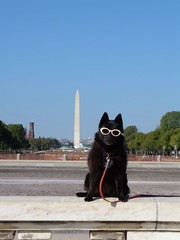

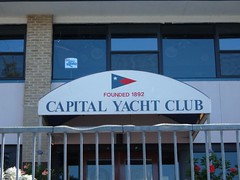


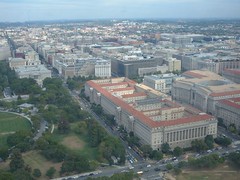
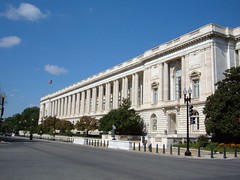

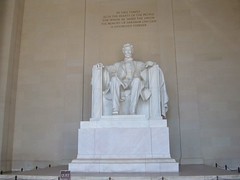


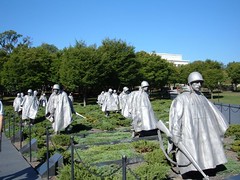

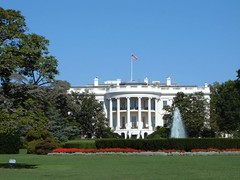


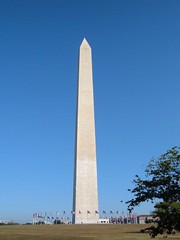
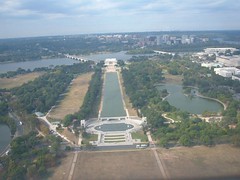



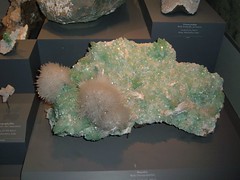
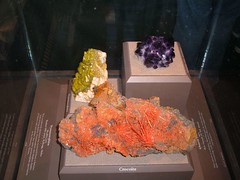
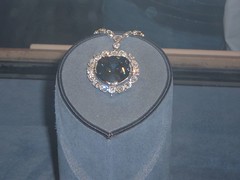
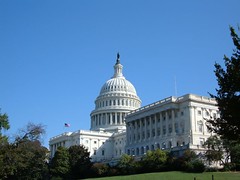



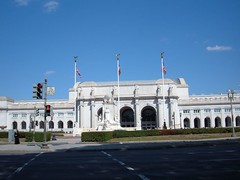
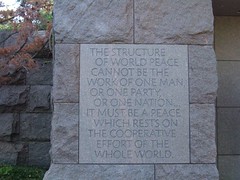








Hi Everyone, We loved your visit to our capital city. Can't wait to see you and hear about the party of boats. HUGS
ReplyDeleteHi Everyone, We loved your visit to our capital city. Can't wait to see you and hear about the party of boats. HUGS
ReplyDeleteBoy....Carol and Eddie sure do a lot of whining! first NYC then DC...how do you stand it Wayne?
ReplyDeleteKathy, your jersey girlfriend